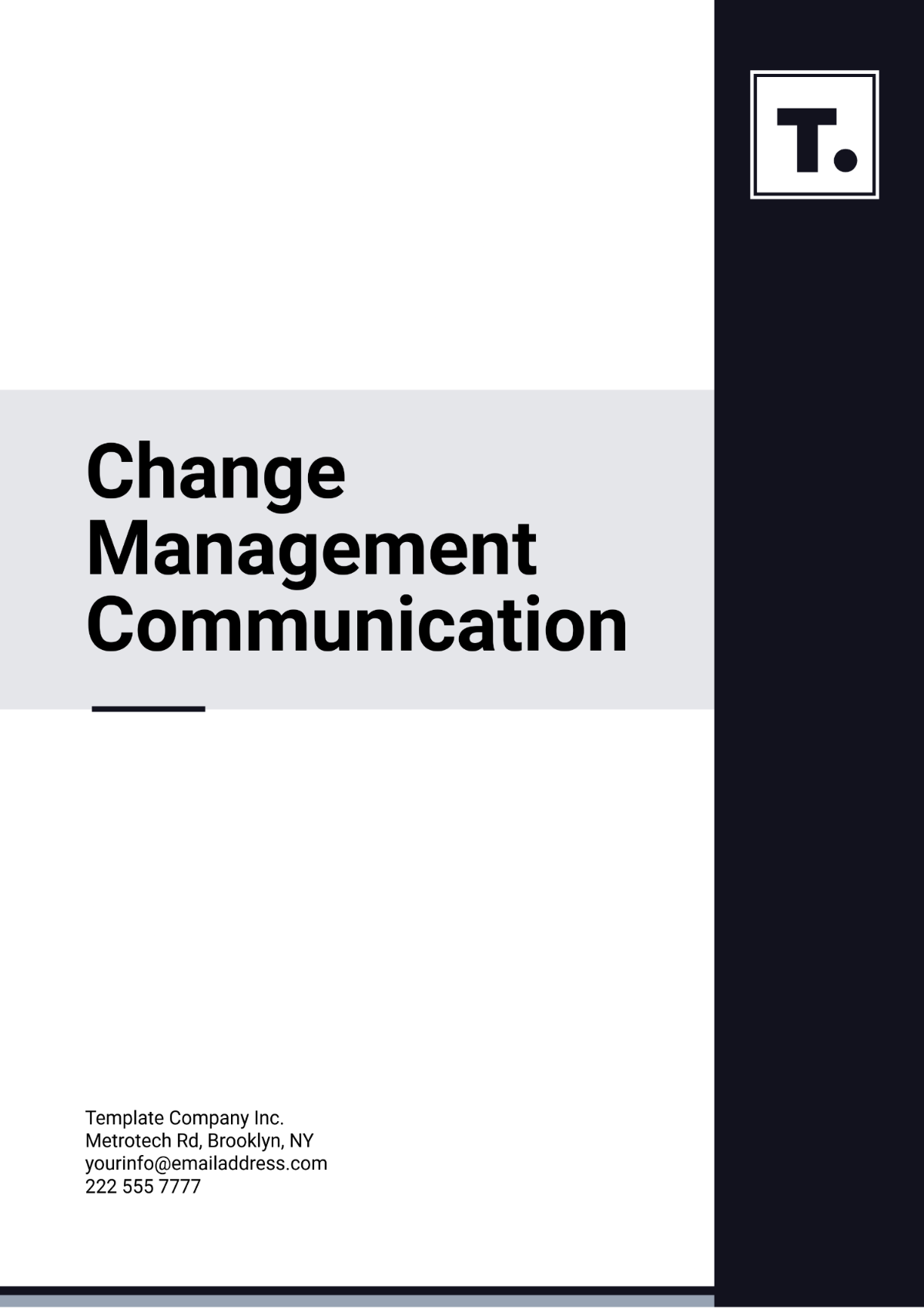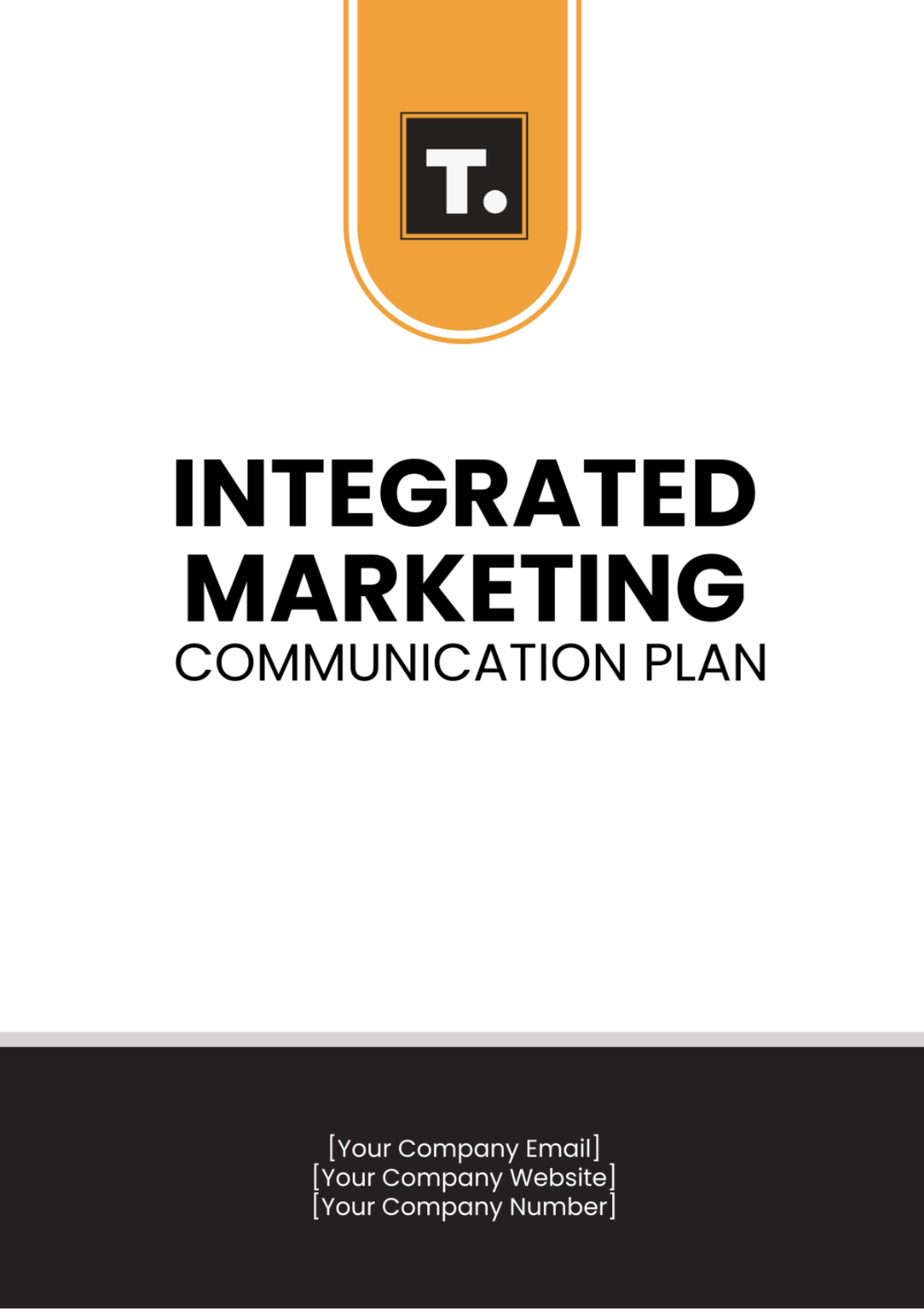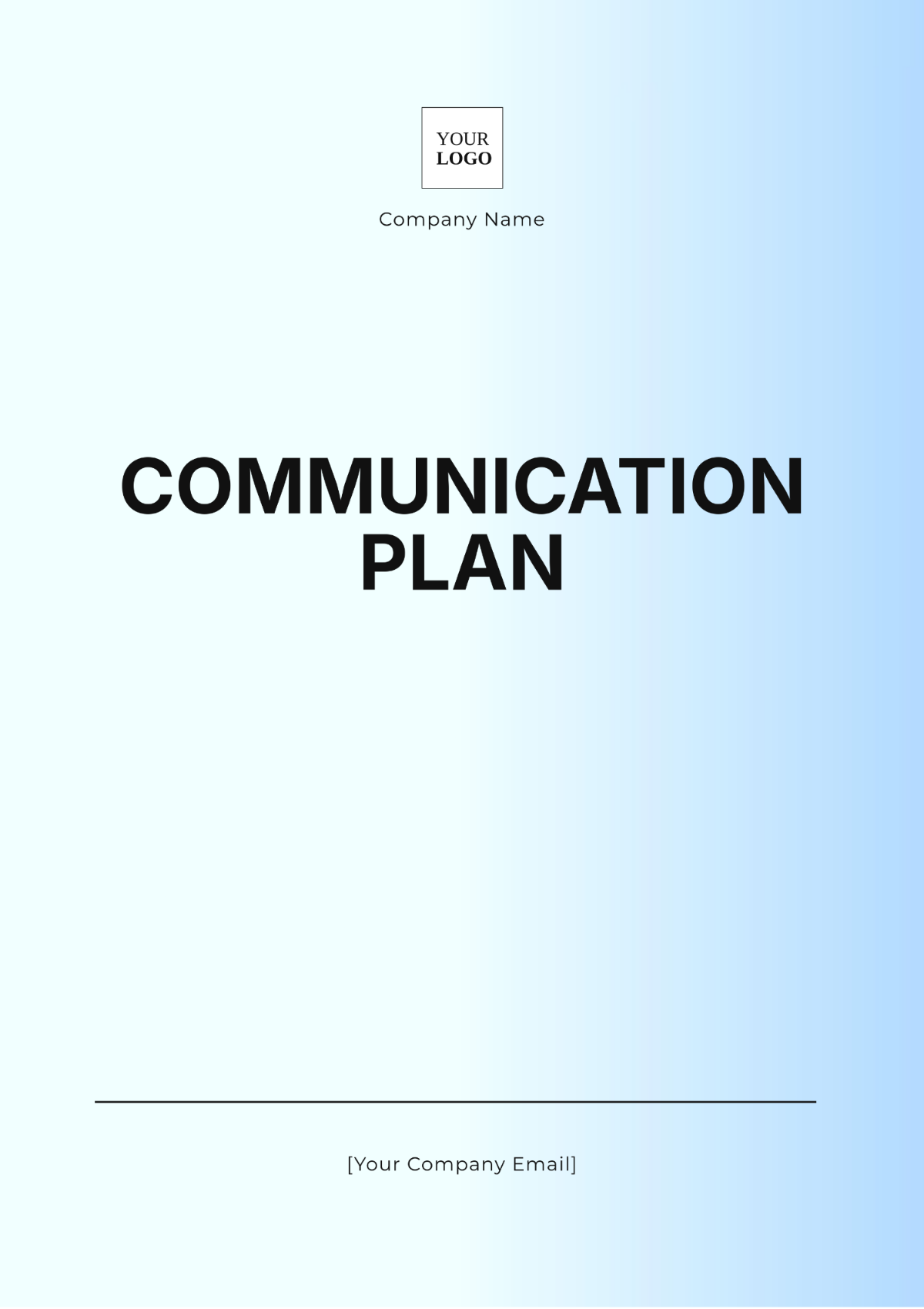Board of Director Communication Plan
I. Executive Summary
A. Purpose of the Communication Plan
The purpose of [Your Company Name]'s plan is to ensure clear and consistent communication between the Board of Directors and key stakeholders. It aims to promote transparency, align strategic goals, and facilitate effective decision-making processes. This plan provides a structured approach to maintaining strong relationships and addressing governance needs in 2050.
B. Importance of Effective Communication
Effective communication is critical for organizational success and governance. It ensures that board members are informed of critical updates and have access to relevant information for decision-making. Additionally, it helps bridge gaps between management, shareholders, and other stakeholders.
C. Scope of the Plan
This plan covers all communication activities between the Board of Directors and internal or external stakeholders. It includes communication protocols, schedules, and feedback mechanisms. The plan also addresses crisis communication and confidentiality guidelines.
D. Summary of Key Objectives
The key objectives include fostering accountability, ensuring regulatory compliance, and supporting the company’s strategic vision. Regular updates on financial and operational performance will also be provided. Mechanisms for feedback and evaluation are integrated to improve communication continuously.
II. Objectives of the Communication Plan
A. Foster Transparency and Accountability
This plan ensures that all board communications promote transparency across the organization. Information regarding decisions, policies, and results will be shared consistently and accurately. Accountability is maintained through documented processes and regular reporting.
B. Enhance Decision-Making and Governance
By providing timely access to critical information, the board can make informed decisions. Governance is strengthened by ensuring compliance with internal policies and external regulations. Effective communication channels support robust decision-making frameworks.
C. Strengthen Relationships with Stakeholders
This plan facilitates open dialogue between the board, management, and shareholders. Stakeholder concerns and feedback will be integrated into board discussions when appropriate. These efforts enhance trust and foster collaborative relationships.
D. Ensure Compliance with Legal and Regulatory Requirements
Adherence to local and international governance standards is a priority in all communications. Regular updates on compliance matters will be provided to the board. This ensures that the company meets its legal obligations and mitigates risks.
E. Support Organizational Goals and Strategic Alignment
Board communication aligns with the company’s strategic objectives for the year 2050. Updates on key initiatives, such as sustainability and technological innovation, will be prioritized. The plan ensures the board’s efforts directly support organizational success.
III. Key Stakeholders
Stakeholder Group | Role in Communication | Communication Methods |
|---|---|---|
Board of Directors | Decision-makers, governance oversight | Meetings, emails, secure portal |
Executive Management | Provides updates, operational insights | Presentations, reports, consultations |
Shareholders and Investors | Key stakeholders for financial performance | Annual meetings, reports, newsletters |
Employees | Operational contributors and implementers | Townhalls, internal memos, intranet |
Regulatory Bodies | Ensure compliance and governance | Filings, formal notices, consultations |
A. Board of Directors
The Board of Directors requires detailed updates on strategic initiatives and organizational performance. They will receive information through scheduled meetings, secure online portals, and regular reports. Tailored communication ensures that directors can fulfill their governance responsibilities effectively.
B. Executive Management Team
The executive management team serves as a primary source of operational and strategic updates to the board. Communication methods include in-depth presentations and performance reports. Regular consultation ensures alignment between management and the board’s expectations.
C. Shareholders and Investors
This group is informed about financial performance, governance updates, and future plans. Communication tools include annual general meetings and shareholder newsletters. Transparency ensures confidence and fosters long-term investment.
D. Employees
Employees play a vital role in implementing the company’s strategies and decisions. Internal communication channels such as memos and intranet updates will keep employees informed about board decisions and key initiatives. Regular updates build trust and encourage alignment with organizational goals.
E. Regulatory Bodies
Regulatory bodies require timely and accurate information to ensure the company’s compliance with governance standards. Communication with these bodies will occur through periodic filings, formal reports, and consultations. Proactive communication will minimize regulatory risks and ensure smooth operations.
IV. Communication Framework
A. Communication Principles
Clarity: All messages will be precise and easy to understand to avoid misinterpretation.
Consistency: Communication will adhere to established policies and guidelines for uniformity.
Confidentiality: Sensitive information will be shared only with authorized individuals.
B. Communication Channels
Channel | Purpose | Frequency |
|---|---|---|
Board Meetings | Discuss strategic issues and performance | Quarterly or as needed |
Email Updates | Share routine updates and announcements | Weekly |
Secure Online Portal | Store and access board documents | Continuous |
Reports | Provide detailed insights | Monthly and annually |
C. Example Communication Schedule for 2050
Month | Activity | Stakeholders Involved |
|---|---|---|
January | Annual Strategy Kickoff Meeting | Board, Executives |
April | Q1 Financial Performance Report | Board, Shareholders |
July | Mid-Year Review | Board, Executives |
October | Budget Planning for 2051 | Board, Finance Team |
V. Crisis Communication Protocols
A. Definition of Crisis Scenarios
Crisis scenarios include cyberattacks, regulatory violations, and financial irregularities. Any situation threatening the company’s reputation or operations qualifies as a crisis. Early identification and prompt action are critical.
B. Rapid Communication Channels
In crises, immediate communication methods include secure video conferences and urgent email notifications. The Corporate Secretary will coordinate responses, ensuring alignment across all parties. Updates will be shared hourly or as the situation evolves.
C. Roles and Responsibilities During Crises
The Board Chair will lead strategic decision-making during crises. The CEO will manage operational responses and report directly to the board. The Corporate Secretary ensures accurate documentation and compliance with legal requirements.
VI. Confidentiality and Security Protocols
A. Guidelines for Handling Sensitive Information
Board documents will be labeled based on their confidentiality level. Access to the area or information will be limited exclusively to individuals who have received proper authorization and clearance. In the event that any information is disclosed without appropriate authorization, those responsible for the unauthorized disclosure will face disciplinary measures according to established protocols or guidelines.
B. Secure Communication Practices
Encryption software will be used for email and file sharing. All communications conducted by the board will take place through specially designated secure portals. Regularly scheduled security audits will be carried out to ensure that all actions and procedures adhere to established best practices.
C. Compliance with Privacy Laws and Regulations
All communications will comply with international data protection laws, such as the Global Data Privacy Act of 2045. The legal team will review sensitive documents before dissemination. Training on data privacy will be provided annually.
VII. Feedback and Evaluation Mechanisms
A. Methods for Gathering Feedback from Board Members
Surveys will be distributed to board members after each quarterly meeting to gather insights on communication effectiveness. Individual interviews will also be conducted annually to address specific concerns. This ensures that the communication plan evolves based on board member input.
B. Mechanisms for Stakeholder Feedback
Stakeholders will have access to feedback forms on the company’s secure portal. Regular townhall meetings will allow shareholders and employees to provide input directly to the board. Feedback will be analyzed and incorporated into the communication strategy.
C. Performance Metrics for Evaluating the Plan
Key performance indicators (KPIs) such as response times, meeting attendance, and stakeholder satisfaction will be tracked. These metrics will be reviewed quarterly to assess the plan’s effectiveness. Adjustments will be made as necessary to address any identified gaps.
VIII. Technology and Tools for Communication
A. Digital Platforms for Collaboration
Digital platforms serve as the backbone for secure document sharing and collaboration among board members. These platforms will provide a centralized location for storing meeting materials, financial reports, and strategic documents, ensuring easy access and seamless communication. Advanced features, such as version control and user activity logs, will help maintain document integrity and track access to sensitive materials.
B. Communication Software and Tools
The use of communication software will streamline interaction among board members, enabling real-time discussions and decision-making. AI-powered tools for scheduling meetings and prioritizing tasks will ensure that all communications are timely and efficient. Additionally, integrated translation tools will break down language barriers, making the communication process more inclusive for global stakeholders.
C. Backup Systems and Redundancy Measures
To ensure uninterrupted communication, the company will utilize cloud-based storage systems with multi-region redundancy to avoid data loss. Regularly scheduled backups and failover systems will ensure that all digital communications and records are protected against system failures. In the event of an emergency, an alternative communication platform will be in place to facilitate continued operations.
IX. Training and Capacity Building
A. Training Programs for Board Members
Board members will receive comprehensive training on communication best practices, including how to effectively engage with various stakeholders. Specialized sessions on emerging technologies, such as AI and blockchain, will empower directors to understand and oversee new digital tools that impact business operations. Regular knowledge-sharing initiatives will ensure that board members stay informed about changes in governance, risk management, and technology.
B. Employee Training on Communication Tools
Employees will be equipped with the necessary skills to use secure communication platforms through specialized training programs. These sessions will cover best practices for email etiquette, document handling, and compliance with confidentiality agreements. Additionally, employees will receive periodic updates on new communication tools, ensuring their proficiency in using the latest technologies to support organizational objectives.
C. Continuous Development Initiatives
The company will foster a culture of continuous improvement by offering webinars and workshops on new communication trends and tools. Board members and key stakeholders will have access to external training programs and industry conferences that focus on the latest developments in corporate governance and communication. This ongoing development will ensure that all parties involved in board communication remain adaptable and informed in a rapidly evolving digital landscape.
X. Financial Considerations
A. Budget Allocation for Communication Activities
A dedicated budget will be established to support communication initiatives, including the purchase of digital tools, training programs, and infrastructure upgrades. This budget will be reviewed annually to ensure alignment with organizational goals and financial priorities. Investments in new technologies will be carefully evaluated to ensure cost-effectiveness and long-term value for the company.
B. Cost-Effective Strategies
To manage costs effectively, the company will prioritize the use of virtual meetings and digital platforms over traditional, in-person meetings and paper-based communication. Leveraging these technologies reduces travel, venue, and printing costs while maintaining high levels of engagement. Additionally, utilizing cloud-based platforms will help eliminate expenses associated with physical storage and document management.
C. Monitoring and Reporting Expenses
A transparent tracking system will be implemented to monitor all expenditures related to communication activities. Regular financial reports will ensure that the allocated budget is spent efficiently and in line with strategic goals. The finance team will conduct periodic audits of communication-related costs, ensuring that resources are being used optimally and adjusting the budget as needed.
XI. Future Improvements and Innovations
A. Integration of Emerging Technologies
Future plans include the adoption of AI-driven analytics to enhance communication insights. These technologies will provide data-driven recommendations for better engagement. Chatbots and automated systems will also improve efficiency in responding to routine queries.
B. Evaluation of Communication Trends
Annual reviews will assess global trends in board communication. This includes monitoring advancements in virtual reality platforms and holographic meetings. Keeping pace with trends ensures that the company remains competitive in its communication practices.
C. Plans for Expanding Communication Channels
The company will explore new platforms such as augmented reality-based collaboration tools and global satellite communication systems. Partnerships with technology providers will facilitate access to cutting-edge innovations. These expanded channels will accommodate the company’s growth and diversification efforts.

















































